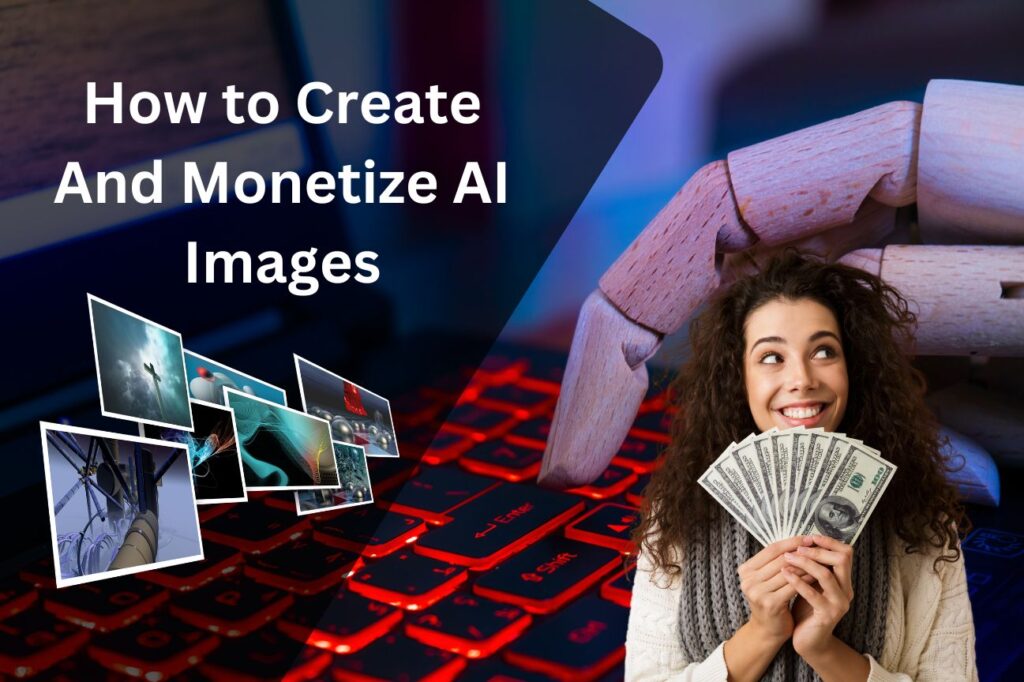Artificial Intelligence (AI) has revolutionized various industries, including art. AI images have gained immense popularity in recent years due to their unique and captivating nature. These images are created using advanced algorithms and machine learning techniques, resulting in stunning visuals that often push the boundaries of human creativity.
AI images have become a trend in the art world, attracting both artists and art enthusiasts. The ability of AI to generate innovative and visually striking images has captivated people’s imagination. From abstract compositions to realistic portraits, AI images offer a wide range of artistic possibilities.
Understanding the basics of AI image creation
Creating AI images may seem daunting at first, but understanding the basics can demystify the process. AI image creation involves training a machine learning model with a large dataset of existing images. The model then learns patterns and features from these images and uses them to generate new, original artwork.
To create AI images, you need a dataset to train your model. This dataset can consist of various types of images, depending on the style or theme you want your AI images to reflect. It’s important to curate a diverse dataset to ensure that your AI model learns a wide range of visual elements.
Once you have your dataset, you can use machine learning frameworks and libraries, such as TensorFlow or PyTorch, to train your AI model. These frameworks provide tools and algorithms that facilitate the training process. It’s crucial to experiment with different models and parameters to achieve the desired level of creativity and uniqueness in your AI images.
Step-by-step guide to creating trending AI images
Creating trending AI images requires a systematic approach. Here is a step-by-step guide to help you navigate the process:
- Define your artistic vision: Before diving into the technical aspects of AI image creation, it’s important to have a clear vision of the style and theme you want to explore. This will guide your choice of dataset and influence the training process.
- Curate a diverse dataset: As mentioned earlier, a diverse dataset is essential to ensure your AI model learns a wide range of visual elements. Gather a collection of images that align with your artistic vision and represent various styles, genres, and subjects.
- Preprocess your dataset: Preprocessing involves cleaning and preparing your dataset for training. This may include resizing images, removing irrelevant data, and normalizing pixel values. Preprocessing ensures that your AI model can effectively learn from the dataset.
- Choose a machine learning framework: Select a machine learning framework that suits your needs and expertise. TensorFlow and PyTorch are widely used frameworks that offer extensive support and resources for AI image creation.
- Train your AI model: Use your curated dataset to train your AI model. Experiment with different architectures, hyperparameters, and optimization techniques to achieve the desired results. Training can take a significant amount of time, so be patient and monitor the progress closely.
- Generate AI images: Once your AI model is trained, you can use it to generate AI images. Provide a random input to the model and let it generate an output image based on the patterns and features it has learned. Explore different variations and experiment with the generated images to refine your artistic vision.
Tips for enhancing the quality and uniqueness of your AI images
Creating AI images is a continuous learning process. Here are some tips to enhance the quality and uniqueness of your AI images:
- Experiment with different datasets: Continuously update and expand your dataset to introduce new visual elements and styles into your AI model. This will help avoid stagnation and ensure your AI images remain fresh and captivating.
- Fine-tune your AI model: After initial training, fine-tuning your AI model can help refine its output. By adjusting the model’s parameters and training it on specific subsets of your dataset, you can achieve more precise control over the generated images.
- Incorporate human input: While AI images are created by machines, human input can add a unique touch to the creative process. Use your artistic expertise to guide the AI model’s output and inject your personal style into the final images.
- Regularly update your techniques: Stay up to date with the latest advancements in AI image creation. Follow research papers, attend conferences, and join online communities to learn from other artists and researchers. Adopting new techniques can help you stay ahead of the curve and produce cutting-edge AI images.
Monetizing your AI art: Exploring different platforms and options
Monetizing your AI art is an exciting opportunity to showcase your talent and earn recognition for your work. There are various platforms and options available to artists looking to monetize their AI images. Here are some popular avenues to consider:
- Online marketplaces: Platforms such as Etsy, Society6, and Redbubble allow artists to sell their AI images as prints, canvases, or merchandise. These platforms provide a convenient way to reach a wide audience and earn income from your art.
- Digital art platforms: NFT (Non-Fungible Token) marketplaces like OpenSea and Rarible have gained significant attention in recent years. Artists can mint their AI images as unique digital assets and sell them to collectors. NFTs provide a secure and transparent way to establish ownership and value for digital artwork.
- Collaborations and commissions: Building relationships with businesses, brands, and individuals can lead to lucrative opportunities. Consider collaborating with companies for commercial projects or offering commissioned AI images to clients. This way, you can create personalized art and generate income from your skills.
- Art exhibitions and galleries: Participating in art exhibitions and showcasing your AI images in galleries can attract art collectors and enthusiasts. Use these platforms to gain exposure, establish your brand, and sell your AI artwork to interested buyers.
Strategies for promoting and selling your AI images
Promoting and selling your AI images requires effective marketing strategies. Here are some strategies to consider:
- Build an online presence: Create a website or an online portfolio to showcase your AI images. Use social media platforms like Instagram, Twitter, and TikTok to share your work and engage with your audience. Building an online presence can help you attract potential buyers and art enthusiasts.
- Collaborate with influencers: Collaborating with influencers in the art and design industry can amplify your reach and increase exposure for your AI images. Reach out to influencers who resonate with your artistic style and explore partnership opportunities.
- Engage with the art community: Join online forums, art communities, and social media groups to connect with fellow artists and art enthusiasts. Engage in discussions, share your knowledge, and contribute to the community. Building relationships within the art community can lead to valuable connections and opportunities.
- Offer limited editions and exclusivity: Create a sense of exclusivity around your AI images by offering limited editions or exclusive releases. This scarcity can attract collectors and drive up the value of your artwork.
Case studies of successful AI image creators
Examining the success stories of AI image creators can provide valuable insights and inspiration. Here are a few case studies:
- Mario Klingemann: Klingemann is a renowned AI artist known for his mesmerizing AI-generated images. His work has been exhibited globally, and he has collaborated with major brands and institutions. Klingemann’s success lies in his ability to push the boundaries of AI image creation and create visually captivating pieces.
- Helena Sarin: Sarin is an AI artist who specializes in creating AI-generated portraits. With her distinctive style and attention to detail, she has garnered a significant following on social media. Sarin monetizes her art through online marketplaces and commissions, showcasing the commercial potential of AI images.
- Robbie Barrat: Barrat gained recognition for his AI-generated art that explores the intersection of technology and creativity. He has sold his AI artwork to collectors and collaborated with musicians and fashion designers. Barrat’s success stems from his experimental approach and willingness to challenge traditional artistic norms.
Tools and resources for AI image creation and monetization
Several tools and resources can aid you in your AI image creation and monetization journey. Here are some noteworthy ones:
- DeepArt.io: DeepArt.io is an online platform that utilizes AI algorithms to transform your photos into AI-generated artwork. It offers a user-friendly interface and a wide range of artistic styles to choose from.
- RunwayML: RunwayML is a machine learning toolkit designed for creative professionals. It provides an intuitive interface and a collection of pre-trained models that can be used to generate AI images.
- AI Art Exchange: AI Art Exchange is a platform that connects AI artists with potential buyers and collectors. It offers a marketplace for selling AI images and provides resources for artists to showcase their work.
- Google Colab: Google Colab is a free cloud-based platform that allows you to run Python code and train machine learning models. It provides access to powerful hardware and libraries, making it an ideal choice for AI image creation.
Legal considerations and copyright issues for AI art
As with any form of art, AI images are subject to legal considerations and copyright issues. Here are some key points to keep in mind:
- Intellectual property: Ensure that you have the rights to the images used in your dataset. If you plan to use copyrighted images, obtain the necessary permissions or use images that are licensed for reuse.
- Derivative works: AI-generated images may be considered derivative works, which can raise copyright concerns. Familiarize yourself with copyright laws in your jurisdiction to understand the implications and limitations of using AI in art creation.
- Attribution and licensing: Clearly attribute the AI model’s contribution when showcasing or selling AI images. Consider using Creative Commons licenses or other licensing frameworks to establish the terms of use for your AI art.
- Seek legal advice: If you have concerns or questions regarding the legal aspects of AI art, consult with a legal professional specializing in intellectual property and copyright law. They can provide guidance tailored to your specific situation.
The future of AI images and their potential for artists
The rise of AI images has opened up a new realm of artistic possibilities. Artists can harness the power of AI to create unique, captivating, and trend-setting artwork. The ability to monetize AI images through various platforms and options offers exciting prospects for artists looking to showcase their talent and earn income from their art.
Read also:How to Build Your Own Text To Video AI Using OpenAI API
As AI technology continues to advance, the future of AI images holds immense potential. Artists can explore new techniques, experiment with different styles, and push the boundaries of creativity. By embracing AI as a tool for artistic expression, artists can tap into a world of innovation and redefine the art landscape.
So, if you’re an artist looking to create and monetize AI images, follow this step-by-step guide, leverage the available tools and resources, and embark on an artistic journey that combines cutting-edge technology with your unique vision. Embrace the possibilities of AI, and let your imagination soar.


